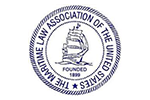Wrongful Death Attorneys
Shipowners Can No Longer Escape Their Maintenance and Cure Obligations Simply by Purchasing a Contrary Medical Opinion
By John Merriam
Trial courts have been hopelessly divided over how–or whether–to apply the summary judgment standard of Rule 56 to motions by injured seamen to reinstate maintenance and cure benefits after being cut off by their employer. The Washington Supreme Court has now provided guidance. Dean v. Fishing Company of Alaska, ___ Wn.2d ___, ___P.3d ___, 2013 A.M.C. ___ (5/9/13).
When injured or taken ill while working on a ship or boat, seamen have the burden of proof–albeit a light one–to show an entitlement to maintenance and cure. It is a matter of substantive law that, once the seaman has established that entitlement, the burden shifts to the shipowner to prove that the seaman has achieved maximum cure or is otherwise no longer entitled to benefits. Mai v. American Seafoods, 160 Wn. App. 528, 539 (2011). But what happens when a seaman makes that showing, gets benefits, and then is cut off after the shipowner gets a doctor to say that the seaman is at “maximum cure” or is otherwise no longer entitled to benefits? What if the seaman’s treating physician disagrees and says that the seaman still needs curative treatment? Under the summary judgment standard, whoever brings a motion for partial summary judgment bears the burden of proof and will lose. Thus the paradox: if the seaman brings a motion for reinstatement of benefits and the motion is considered under Rule 56 standards, the seaman will lose because material issues of fact– the conflicting medical opinions– prevent resolution of the issue until trial. If the shipowner, on the other hand, brings a motion to terminate its maintenance and cure obligation, the shipowner will lose because material issues of fact–the same dueling medical opinions–prevent resolution of the issue until trial. Is this fair? Is it logical? It makes no sense that the moving party loses, regardless of the merits.
As framed by the state Supreme Court, the issue is: “(H)ow should a trial court treat a seaman’s pretrial motion to reinstate maintenance and cure after the shipowner–who initially paid maintenance and cure–cuts off payments?” Opinion at 9. Stated another way: “(D)oes a trial court err by applying the summary judgment standard to the seaman’s motion to reinstate maintenance and cure?” Opinion at 4. The answer is ‘yes’, according to the Supreme Court in Dean. Seamen now need only to make a regular motion to have maintenance and cure reinstated, and need not overcome the burdens required by CR 56.
Ian Dean worked for the Fishing Company of Alaska (FCA) in May and June 2006 as a processor aboard the factory-trawler Alaska Juris. He complained of a variety of symptoms when leaving the vessel, including bilateral carpal tunnel syndrome and neck pain. FCA paid maintenance– first at $20 then $30/day–and covered his medical bills. Three years later, Dean’s treating physician said he still needed treatment for neck pain. FCA wearied of paying maintenance and sent Dean for an examination by Dr. Thomas Williamson-Kirkland. Dr. Williamson-Kirkland said what FCA wanted him to say–that Dean’s neck was normal, and if it had been injured on the Alaska Juris, Dean was at maximum cure. FCA cut off maintenance and cure in September 2009.
Dean filed suit in King County Superior Court, and soon thereafter brought a regular motion for the reinstatement of maintenance and cure, for the neck injury only. At FCA’s urging, Judge Laura Inveen treated the motion as one for partial summary judgment under CR 56. Dean argued that if the motion was to be considered under CR 56, it was FCA who should have the burden of proving maximum cure as a matter of substantive maritime law. It wasn’t Dean’s burden to prove that he had not achieved maximum cure. The trial judge disagreed and denied the motion, ruling in favor of FCA as the non-moving party, holding that there were genuine issues of material fact as to whether Dean’s injuries had reached maximum cure. FCA paid no more maintenance and cure.
The case was put into MAR and arbitrated in April 2010 by Robert Bocko, Esq. The arbitrator ruled in FCA’s favor on both the maintenance and cure issue, and on liability claims brought under the Jones Act and the general maritime law for unseaworthiness. Dean requested trial de novo.
Back in front of Judge Inveen, Dean brought a motion to compel discovery on the existence of surveillance films, which was denied. (Discussion of the surveillance issue is beyond the scope of this article. See Trial News, “Are Surveillance Films Discoverable?” (July/August 2000))
Rather than go through trial, the parties stipulated to entry of judgment in favor of FCA, contingent on Dean’s appeal of the maintenance and cure and surveillance issues. The stipulated judgment provided that the outcome of the appeal would determine the prevailing party.
Division I of the Court of Appeals affirmed the trial court, ruling that a summary judgment standard should apply to a motion to reinstate maintenance and cure, just as it should to a motion to start maintenance and cure in the first instance. Dean v. FCA, 166 Wn. App. 893 (2012). Dean petitioned for review by the state Supreme Court.
The Supreme Court reversed the Court of Appeals in a 9-0 en banc decision, holding that the summary judgment standard was not appropriate for seamen seeking to reinstate maintenance and cure benefits. Opinion at 17.
We hold that if a shipowner stops paying maintenance and cure to a seaman because it has determined that the seaman has reached maximum cure, a trial court errs by applying a summary judgment standard to a seaman’s motion to reinstate maintenance and cure. Instead, after a seaman makes such a motion, the trial court should order the shipowner to reinstate such payments unless the shipowner can provide unequivocal evidence that the seaman has reached maximum cure.
Opinion at 17-18.
The procedure is thus clarified for seamen seeking maintenance and cure–at least in the state courts of Washington. Summary judgment motions are still appropriate for a seaman seeking an initial entitlement to maintenance and cure but a regular motion will suffice when the issue is one of conflicting medical opinions, on whether or not the seaman has reached maximum cure or has otherwise become disentitled to benefits. Incredibly, after decades of maintenance and cure litigation there are no other appellate decisions that address the tension between the procedural requirements of Rule 56 and the substantive maritime law, for allocating the burden of proof between seaman and shipowner. FCA did not petition for certiorari to the U.S. Supreme Court, so Dean is binding precedent in this state’s courts and persuasive authority in other jurisdictions.
One reason that this case is of first impression, after trial courts have been grappling with the issue for years, is the amount of money involved. Maintenance and cure motions typically don’t involve large sums and usually less in attorney fees. Punitive damages are for the jury at trial and don’t help the seaman in his or her hour of need. At issue in this case was the entitlement to maintenance at $30/day for 216 days–the period between the cut-off of maintenance and the arbitration hearing, when Dean lost on all counts and would have been cut off anyway–or $6,480.
But even with this clarification, what about when the shipowner really believes the seaman is at maximum cure and has a medical opinion backing up that belief? An extreme example would involve an objective opinion from a board-certified orthopedic doctor hired by the shipowner, versus a strip-mall chiropractor who won’t ever say the seaman is at maximum cure. The solution is for the shipowner to request an expedited hearing or trial pursuant to CR 42(b).
In an expedited trial, the shipowner would bear the same burden as it would at trial, i.e., the shipowner would have to prove by a preponderance of the evidence that the seaman had reached maximum cure.
Opinion at 12.
By the same token, the seaman can move for an expedited hearing or trial under CR 42(b) in situations where the shipowner asserts material issues of disputed fact which prevent the injured seaman from establishing an initial entitlement to maintenance and cure. That occurs when the shipowner has evidence to contradict, 1) seaman status; 2) that the injury manifested while the seaman was in the service of the ship; or 3) that expenditures were made–or the seaman has liability for–medical bills and/or room and board. Opinion at 10. Under the summary judgment standard, the seaman would lose a motion for maintenance and cure. Under the preponderance standard of CR 42(b), the seaman might win the right to benefits.
Since this decision was released, some maritime defense practitioners are advising their clients to withhold approval on initial requests for maintenance and cure to make sure the burden of proof for that entitlement stays with the seaman, because once the seaman starts receiving benefits the burden shifts to the shipowner to prove that the seaman has reached maximum cure or has become otherwise disentitled. This line of reasoning goes that if the entitlement to maintenance is never conceded in the first place, the seaman has the burden of proving that entitlement. Shipowners will follow this advice at their peril. Unless the shipowner has a real good reason to withhold benefits, it is setting itself up for an award of punitive damages under Clausen v. Icicle Seafoods, 174 Wn.2d 70 (2012). See, Atlantic Sounding v. Townsend, 557 U.S. 404 (2009). Except when there truly is a good-faith dispute about the initial entitlement, the better approach is for the shipowner to start paying maintenance and then move for an expedited trial or hearing under CR 42(b) to determine whether the obligation should continue.
Gone are the days–at least in the state courts of Washington– when a vessel owner can cut off a seaman’s maintenance and cure simply by paying a doctor to utter the magic words “maximum cure”. If the seaman’s treating physician thinks the seaman is improving, the vessel owner cannot cut off benefits until all medical evidence is “unequivocal” that the seaman has reached maximum cure. The Court of Appeals was reversed. The Supreme Court did follow the Court of Appeals on the surveillance issue, refusing to address it as moot. Opinion at 18.
FCA was represented by Michael Barcott and Megan Blomquist of Holmes,Weddle & Barcott. Dean was represented by John Merriam with the invaluable assistance of Bryan Harnetiaux and George Ahrend of the WSAJ Amicus Committee, participating in the Supreme Court as amicus curiae for Dean.
Eagle John Merriam is a former merchant seaman, now a sole practitioner at Fishermen’s Terminal in Seattle, who restricts his practice to the representation of claimants for maritime wages and injury.













